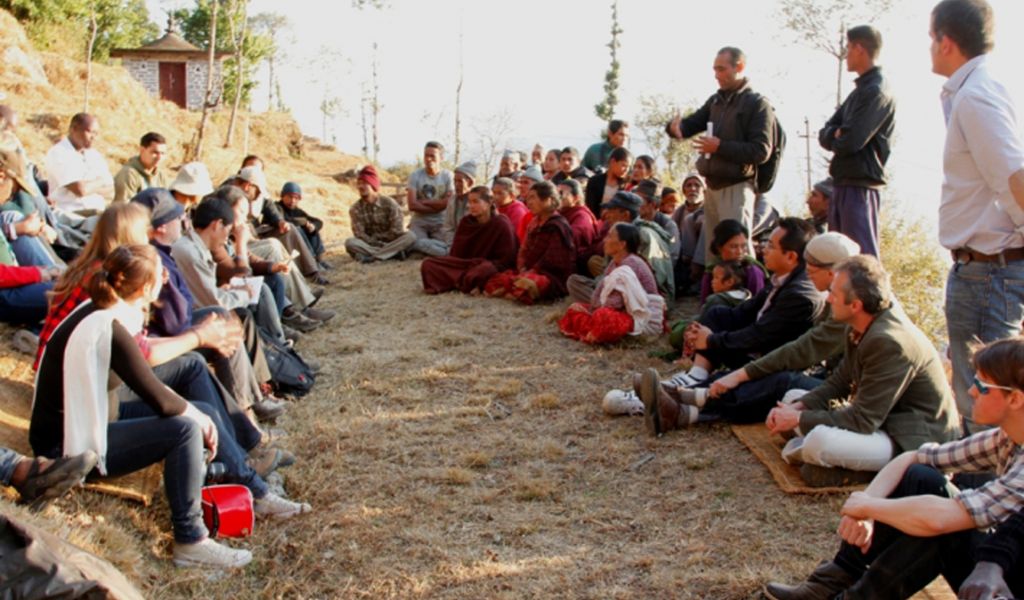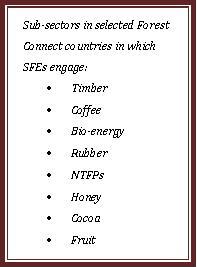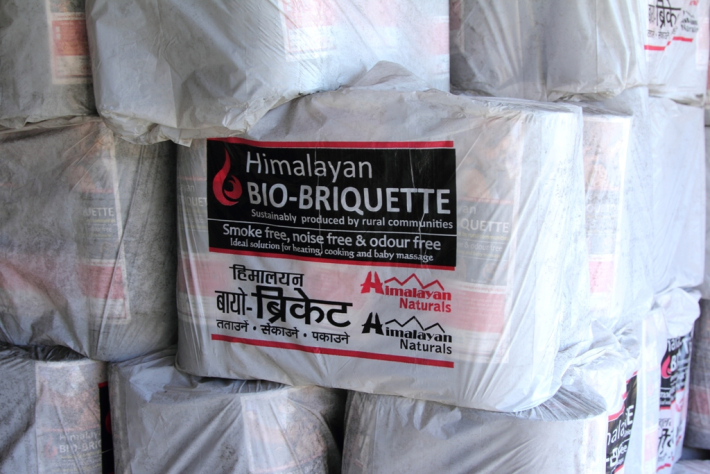Forest Connect: Prioritizing Scarce Resources for Facilitated Support of Small and Medium Forest Enterprises

Forest Connect, established in 2007 by FAO (Food and Agriculture Organization of the United Nations) and IIED (International Institute for Environment and Development) is a global association of 10-15 in-country teams supporting SFEs, further supported by a network of over 900 members. This year’s conference attracted 30 individuals and institutions from 19 countries. Forest Connect also played an active role in designing the new FAO-hosted Forest and Farm Facility that aims to support groups of forest and farm producers to engage with more cross-sectoral policy processes.
Locally controlled forest enterprises (SFEs) are known to accrue wealth locally, empower local entrepreneurship, strengthen social networks, and engender local social and environmental accountability. The environmental, social, and financial sustainability with which they operate is also fundamental for the success of Forest Law Enforcement Governance and Trade (FLEGT) action plans, strategies for Reducing Emissions from Deforestation and Forest Degradation (REDD+), and attempts to build green economies that deliver food, fuel, and construction materials to those who need them most.
In least developed countries, structures that connect with and support SFEs are weak, and have resulted in economic failure, social conflict, and degradation of forest resources on which these SFEs depend. The Forest Connect alliance addresses this lack of connectedness and helps to build social, economic and environmental sustainability amongst SFEs by connecting them to:
- each other by strengthening associations and alliances;
- service providers by building business capacity to access financial and business development services;
- buyers and investors by enhancing market links and brokering fair deals; and
- governance processes by securing commercial forest rights and incentives by shaping policies and institutions that control the broader business environment.
For this 3rd Forest Connect event - hosted by Asia Network for Sustainable Agriculture and Bio-resources (ANSAB) in Kathmandu, country teams from Nepal, Vietnam, Tanzania, Burkina Faso, Cambodia, Mexico, DR Congo, and Brazil prepared forward-looking reports in response to increasing threats of global climate, biodiversity loss and excessive nitrogen use associated with changes in forest land use. The increasing need to secure social foundations among the poorest groups to facilitate income generation, and food and energy security for both men and women fueled some serious discussions. The Forest Connect alliance – also attended by invited forest institutions concerned with SFEs from Guatamala, Uganda, Mali, Ghana, Canada, Finland, USA, Indonesia, Myanmar, and Great Britain – strives to support SFEs in sub-sectors that are likely to deliver solutions for these multiple challenges.

The forward-looking reports confirmed the challenges which SFEs face, each responding distinctively to its social and physical context. However, no matter what prioritized sub-sectors were identified, alliance members agreed that no single sector can provide communities with guarantees to benefit all its members. In many of the identified sub-sectors, participants identified weaknesses in terms of equity, socio-economic security, and environment, indicating that overall community needs have to be addressed carefully. Consistent for most countries is the promise to commercially develop timber and bio-energy, complemented with products and services coming from coffee, rubber, and natural NTFPs. This framework confirms a key COP 18 outcome: to adhere to a landscape approach [see also Are ‘Landscapes’ the new ‘Forests’?]. For RECOFTC this fits well with its approach in putting people first. And, by ensuring that communities obtain more and guaranteed rights to forest resources, even new sub-sectors with additional benefits may become viable.

Based on the country presentations, subsequent lively discussions, and a field trip to the successful Lokta paper and briquette manufacturing producer groups, Forest Connect members envisioned a renewed strategic focus to effectively support SFEs in partaking in fair and green economies. Its prioritized components are: a) linking social enterprises with SFEs; b) capacity building of SFE facilitators, and of c) emerging SFEs; d) research and documentation of effective business models; e) communication to document best practices; f) national and international advocacy to invest in SFEs; g) development of SFE models attracting climate change and carbon finance; and h) learning and/or networking events, and where possible, f) supporting the development and commercialization of bio-energy SFEs. Where appropriate, member countries will invest in (some of) these initiatives at national level, while at regional and global levels, exchanges take place to exchange and learn. In cases where additional resources are required the alliance will require to mobilize funds, especially for initiatives where effective learning and replication between members takes place.
For RECOFTC the outcome of this event is well placed showing a mix of what its strength are: capacity building, research, communication and piloting. Interestingly is that the alliance chooses to let the market – socially and environmentally inclined - decide whether a sub-sector view or a wider landscape mode is required. Both seem to be equally important to achieve a mix of social, environmental and business goals by investing in SFEs. Choosing Lokta paper and briquette business models as an example of CSR project, Nepal shows that communities can benefit from community forestry: if they have commercial access rights to resources, are well organized and managed in a transparent manner by locally elected leaders, have a common vision, are respected by local governments, have clear social equity built in their business models and clear benefit sharing mechanisms. However, it should not be underestimated that these SFEs require time to emerge and support from organizations like ANSAB to provide readiness investment before becoming economically viable.
FAO and IIED have governed the Alliance since 2007 and are inviting RECOFTC to join as the Forest Connect hub in SE Asia to coordinate learning and sharing of national and regional SFE best practices, and also to engage in building better understanding and cooperation among SFEs, private sector and policy makers. These efforts are meant to create attractive investment opportunities for socially inclined private sector both willing to invest in poverty alleviation while also financially benefiting.

